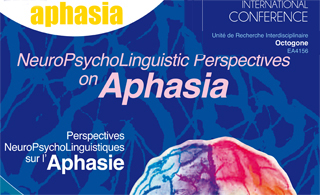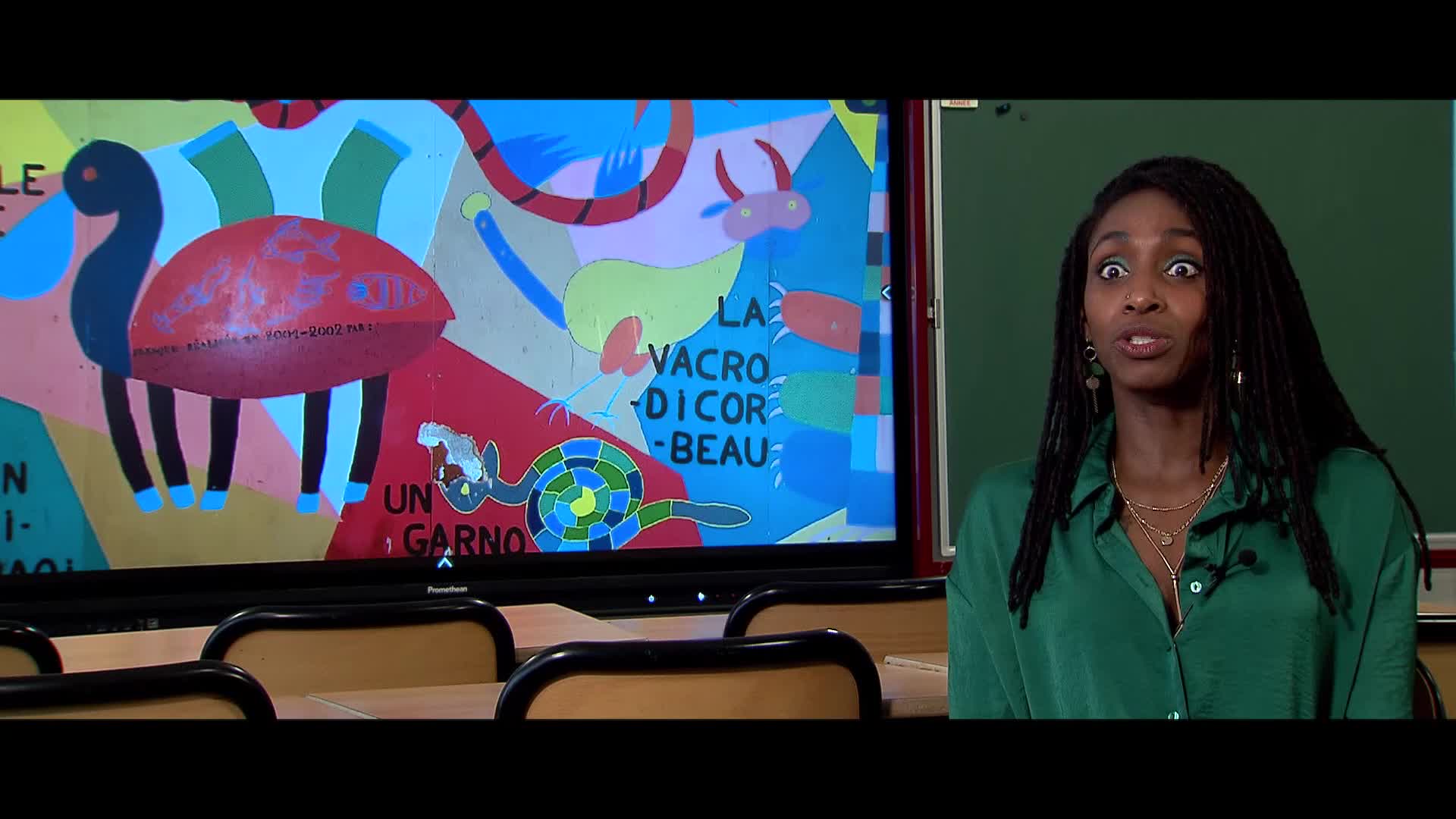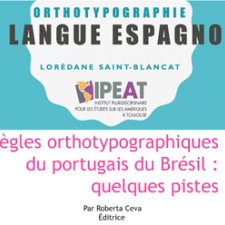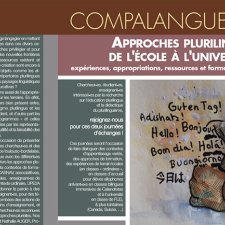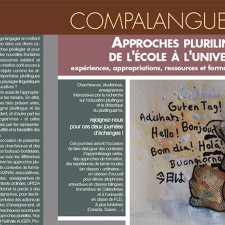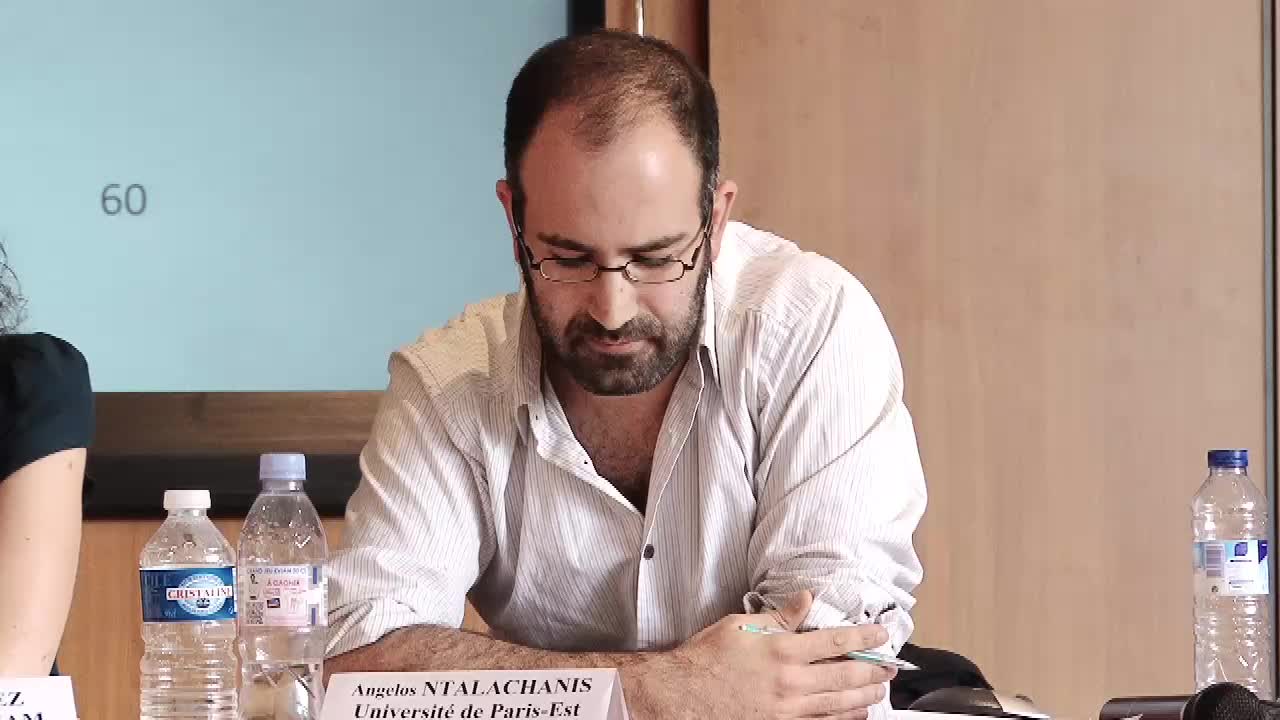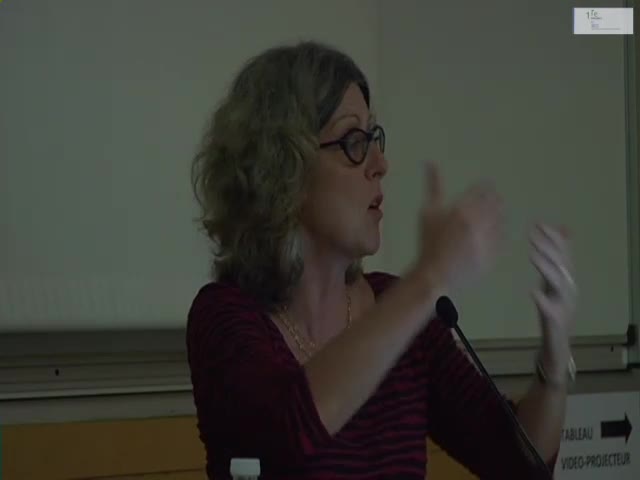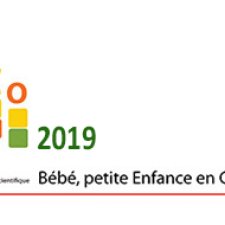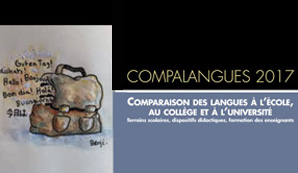Notice
Perioperative language assessment in multilingual patients undergoing awake surgery / Barbara Köpke
- document 1 document 2 document 3
- niveau 1 niveau 2 niveau 3
Descriptif
Perioperative language assessment in multilingual patients undergoing awake surgery / Barbara Köpke. In "Perspectives neuropsycholinguistiques sur l'aphasie - NeuroPsychoLinguistic Perspectives on Aphasia", colloque international organisé par l'Unité de Recherche Interdisciplinaire Octogone de l'Université Toulouse II-Le Mirail (France). Toulouse, 21-23 juin 2012.
Anawake craniotomy is an operation performed in the same manner asa conventionalcraniotomy butwith the patient awake during the procedure. This is a preferredtechnique for operations to remove lesions close to, or involving,eloquent language cortex. Direct intraoperative electricalstimulation mapping (ESM) allows testing patient’s motor andlanguage functions continuously throughout the operation. The overallaim is to preserve the patient’s language skills (Ojemann, Ojemann,Lettich, & Berger, 1989). This technique has been popularized forepilepsy surgery (Ojemann, 1987) but also allows most of braintumours to be aggressively resected without any long-term languagedeficit (Sanai, Mizadeh, & Berger, 2008).
Forbilingual and multilingual patients, brain activation (see review inIndefrey, 2006) and ESM studies (e.g. Giussani et al. 2007; Lucas etal. 2004) have shown that different languages may be localized, atleast partially, in distinct microanatomical systems located withinthe same gross anatomical areas.
Wereport 3 case studies, for which a comprehensive assessment oflanguages they were fluent in was conducted pre-, intra-, andpost-operatively, to preserve their communication skills and qualityof life:
- AFrench-English-Slovakian-Spanish quadrilingual (PP);
- AFrench-English-Occitan trilingual (MF);
- AnArabic-Spanish-French trilingual (WA).
Twopatients (PP and MF) had a left premotor WHO grade II glioma, and onepatient (WA) had a left premotor cortical dysplasia.
Orallanguage skills were assessed pre- and post-operatively with selectedparts of the Bilingual Aphasia Test (BAT) (Paradis et al. 1987) inthe languages they currently use: French-English for PP,French-Occitan for MF, and Arabic-Spanish-French for WA. Naming taskswere constructed in the same languages. Pictures were selected fromthe CRL-IPNP corpus (Szekely et al., 2005) with the exclusion of allpictures which elicited cognates or compound words, or which wereculturally not adapted. The selected pictures were matched as far aspossible for length across languages and frequency. Only picturesthat the patient named correctly in each language were retained forintraoperative testing. Additionally, a switch task was constructedfor each patient involving the two most important languages. Theblocked naming tasks in two languages and the switch task were usedfor ESM during surgery. These were also used for post-operativetesting, as well as the BAT.
Wewill present pre- and postoperative behavioral data as well as brainmapping data and discuss their relevance with respect to the neuralrepresentation of languages in multilingual speakers.
Thème
Documentation
Bibliographie sélective
Giussani, C., Roux, F-E., Lubrano, V., Gaini, S. M., & Bello, L. (2007). Review of language organisation in bilingual patients: what can we learn from direct brain mapping? Acta Neurochirurgica, 149 (11), 1109–1116.
Indefrey, P. (2006). A Meta-analysis of hemodynamic studies on first and second language processing: Which suggested differences can we trust and what do they mean? Language Learning, 56, 279–304.
Lucas, T. H., McKhann, G. M., & Ojemann, G. A. (2004). Functional separation of languages in the bilingual brain: a comparison of electrical stimulation language mapping in 25 bilingual patients and 117 monolingual control patients. Journal of Neurosurgery, 101, 449–457.
Ojemann, G., Ojemann, J., Lettich, E., & Berger, M. (1989). Cortical language localization in left, dominant hemisphere: an electrical stimulation mapping investigation in 117 patients. Journal of Neurosurgery, 71, 316–326
Paradis, M. & Libben, G. (1987). The Bilingual Aphasia Test. Hillsdale, NJ: Lawrence Earlbaum Associates.
Sanai, N., Mizadeh, Z., & Berger, M. S. (2008). Functional outcome after language mapping for glioma resection. The New England Journal of Medecine, 358, 18–27.
Szekely, A., et al. (2005). Timed action and object naming. Cortex, 41 (1), 7–26.
> Voir aussi la bibliographie générale à télécharger dans l'onglet "Documents" de la séquence vidéo d'ouverture du colloque.
Dans la même collection
-
Phonological and phonetic encoding and impairment / Marina Laganaro
LAGANARO Marina
Phonological and phonetic encoding and impairment / Marina Laganaro
-
Perspectives neuropsycholinguistiques sur l'aphasie - NeuroPsychoLinguistic Perspectives on Aphasia…
Perspectives neuropsycholinguistiques sur l'aphasie - NeuroPsychoLinguistic Perspectives on Aphasia : ouverture. Colloque international organisé par l'Unité de Recherche Interdisciplinaire Octogone de
-
A « subtle phonetic deficit » in fluent aphasia ? An acoustic and perceptual study / Anna Marczyck
MARCZYCK Anna
A « subtle phonetic deficit » in fluent aphasia ? An acoustic and perceptual study / Anna Marczyck
-
Entre dysfonctionnement et normalité : une perspective à partir de données anatomo‐fonctionnelles o…
DUBOIS Cyril Michel Robert
LAHYANI Saoussan
Entre dysfonctionnement et normalité : une perspective à partir de données anatomo‐fonctionnelles obtenues auprès de sujets sains et de sujets aphasiques / Saoussan Lahyani, Cyril Dubois. In
-
Pour une approche dynamique des réponses aphasiques obtenues en dénomination d’images : apport de l…
TRAN Thi Mai
Pour une approche dynamique des réponses aphasiques obtenues en dénomination d’images : apport de l’analyse qualitative / Thi-Mai Tran, in "Perspectives neuropsycholinguistiques sur l'aphasie -
-
Compounding and lexical recursion in aphasia and in Alzheimer’s disease / Zoltán Bánréti
BáNRéTI Zoltán
Compounding and lexical recursion in aphasia and in Alzheimer’s disease / Zoltán Bánréti. In "Perspectives neuropsycholinguistiques sur l'aphasie - NeuroPsychoLinguistic Perspectives on Aphasia",
-
Age of acquisition affects word retrieval in spontaneous speech produced by patients with Alzheimer…
GAYRAUD Frédérique
BARKAT Mélissa
Age of acquisition affects word retrieval in spontaneous speech produced by patients with Alzheimer's disease / Frédérique Gayraud, Mélissa Barkat-Defradas. In "Perspectives neuropsycholinguistiques
-
Morpho-syntactic processing of regular and irregular formations in Arabic aphasia / Tariq Khwaileh
KHWAILEH Tariq
Morpho-syntactic processing of regular and irregular formations in Arabic aphasia / Tariq Khwaileh. In "Perspectives neuropsycholinguistiques sur l'aphasie - NeuroPsychoLinguistic Perspectives on
-
German Broca’s and Wernicke’s aphasics display similar deficits in syntactic performance / Eva Wimm…
WIMMER Eva
German Broca’s and Wernicke’s aphasics display similar deficits in syntactic performance / Eva Wimmer. In "Perspectives neuropsycholinguistiques sur l'aphasie - NeuroPsychoLinguistic Perspectives on
-
Violating canonicity in Spanish agrammatism / Silvia Martínez-Ferreiro
MARTINEZ-FERREIRO Silvia
Violating canonicity in Spanish agrammatism / Silvia Martínez-Ferreiro. In "Perspectives neuropsycholinguistiques sur l'aphasie - NeuroPsychoLinguistic Perspectives on Aphasia", colloque international
-
Sentence comprehension deficits in aphasia : additional insights from impairment-specific assessmen…
HANNE Sandra
Sentence comprehension deficits in aphasia : additional insights from impairment-specific assessment / Sandra Hanne.
-
Principles of bilingual aphasia assessment and interpretation of findings / Michel Paradis
PARADIS Michel
Principles of bilingual aphasia assessment and interpretation of findings / Michel Paradis. In "Perspectives neuropsycholinguistiques sur l'aphasie - NeuroPsychoLinguistic Perspectives on Aphasia",
Sur le même thème
-
Dis-moi comment tu parles
LENART Ewa
LAMALLE CABARRUS Aurélie
DIAKITE Edwige
NGUYEN Minh The
AMMARI Lila
Ce film a été réalisé dans le cadre de la recherche-action "le plurilinguisme à l'école primaire : valoriser les langues d'héritages pour une école et une société inclusives" Avec l'aimable
-
L'orthotypographie en langue espagnole et en langue portugaise
Ce webinaire s'inscrit dans une série de webinaires courts, de 1 heure environ, qui vise à offrir aux éditeurs et éditrices francophones travaillant sur des revues ou ouvrages en langue étrangère une
-
Approches plurilingues de l'école à l'université. Grands Témoins : Mariella Causa, Claudine Garcia-…
GARCIA-DEBANC Claudine
CAUSA Maria
Les journées COMPALANGUES 2021 sont l’occasion de remettre en réflexion et dialogue les problématiques travaillées dans les journées COMPALANGUES 2015 et 2017, ainsi que dans le colloque LIVRE
-
Inclusion linguistique des enfants plurilingues en classe ordinaire : entre approbation et réticenc…
PEREGO Christine
À partir de son expérience de chargée de formation et formatrice au CASNAV [centre académique pour la scolarisation des élèves allophones nouvellement arrivés (EANA)] de l'académie de Lyon, et en tant
-
Du multilinguisme « cosmopolite » à l’option arabe : stratégies linguistiques et redéfinition de l…
Νταλαχάνης Άγγελος
Panel 2 : Éducation et enseignement, entre savoirs locaux et logiques impériales Dire et écrire le pouvoir impérial en Méditerranée, XIXe-XXe siècles Journée d’études organisée le 8 juin 2012 de
-
La pluralité des langues
ARMAND Françoise
Éducation et diversité Première rencontre du Réseau international Éducation et diversité (RIED) 20-22 octobre 2014, École supérieure du professorat et de l’éducation, Marseille
-
How prosody helps infants and children to break into communication
GERVAIN Judit
The talk will present four sets of studies with young infants and children to show who prosody helps them learn about different aspects of language, from learning basic word order through
-
"Déficit phonético-phonologique dans l’aphasie vasculaire : Réflexion sur le rôle des structures sy…
Les locuteurs ayant subi un AVC entrainant une aphasie avec deficit (phonetico-)phonologique realisent, en production orale, des paraphasies qui alterent soit la structure syllabique de leur langue
-
Socialisations langagières et inégalités scolaires / Élisabeth Bautier
BAUTIER Élisabeth
Sous-tendue par la question des inégalités d’apprentissage scolaires et des habitudes langagières de l’école qui sont au cœur de ces inégalités, cette communication porte sur les modes de
-
Compalangues 2017 : ouverture / Marie-Christine Jaillet, Christine Vergnolle, Cécile Fabre, Euriel…
JAILLET Marie-Christine
GOBBé-MéVELLEC Euriell
VERGNOLLE-MAINAR Christine
FABRE Cécile
Compalangues 2017 : ouverture / Marie-Christine Jaillet, Christine Vergnolle, Cécile Fabre, Euriell Gobbé-Mévellec
-
Compalangues : Qu'es aquô ? / Claudine Garcia-Debanc, Chantal Dompmartin
GARCIA-DEBANC Claudine
DOMPMARTIN-NORMAND Chantal
Compalangues : Qu'es aquô ? / Claudine Garcia-Debanc, Chantal Dompmartin
-
Pratiques d'enseignement plurilingue : contraster, comparer, intégrer, alterner / Laurent Gajo
GAJO Laurent
Pratiques d'enseignement plurilingue : contraster, comparer, intégrer, alterner / Laurent Gajo


